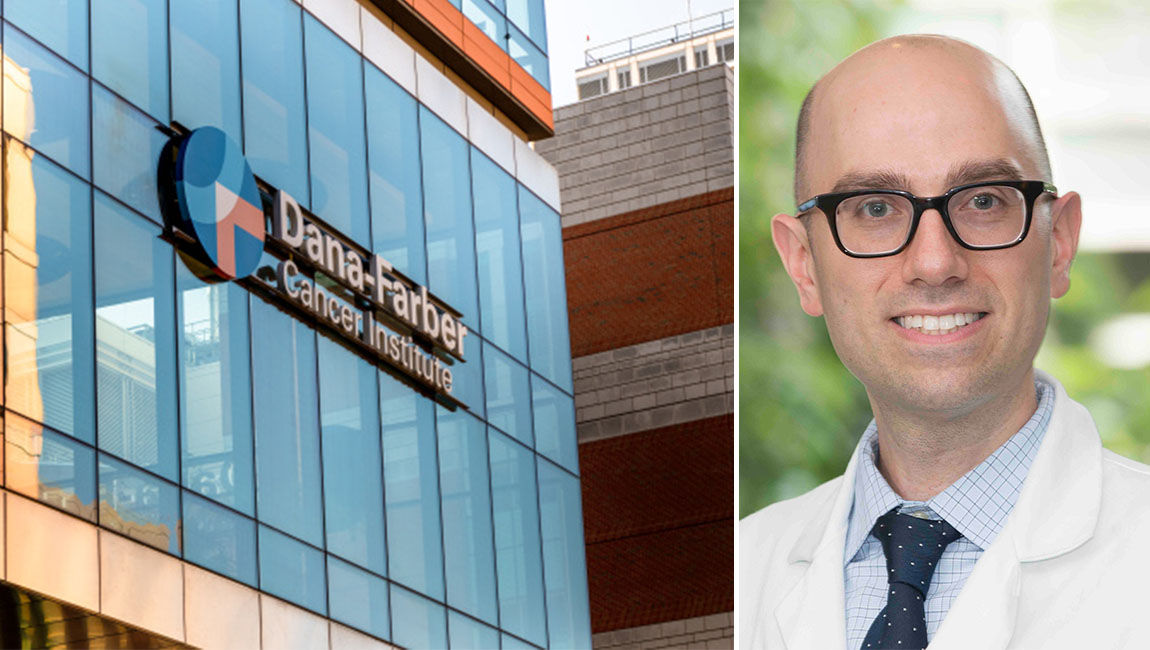A World Beyond Chemo
Dr. Eric Smith ’02 runs a lab at Dana-Farber Cancer Institute that’s working on developing and expanding cutting-edge therapies for cancer patients.By: Meghan Kita Wednesday, November 11, 2020 10:03 AM
 Dr. Eric Smith ’02, the laboratory principal investigator and director of translational research for immune effector cell therapies at Dana-Farber Cancer Institute in Boston. Photo by Sam Ogden of Dana-Farber Cancer Institute
Dr. Eric Smith ’02, the laboratory principal investigator and director of translational research for immune effector cell therapies at Dana-Farber Cancer Institute in Boston. Photo by Sam Ogden of Dana-Farber Cancer InstituteThe words “cancer treatment” might bring to mind images of chemotherapy: having to return to the hospital again and again for multiple rounds of IV drips; enduring well-known side effects like nausea, hair loss and fatigue; or going through all that only to get the bad news that the cancer isn’t responding. There is an emerging therapy, however, that can be more targeted with fewer lengthy side effects. It’s called chimeric antigen receptor (CAR) T-cell therapy, and it involves modifying a patient’s T cells (a part of the immune system) to recognize and destroy cancerous cells via a protein they express.
The resulting product is “a living drug, and we tend to give it as a single-time injection,” says Dr. Eric Smith ’02, the laboratory principal investigator and director of translational research for immune effector cell therapies at Dana-Farber Cancer Institute in Boston. “Because it’s a one-time treatment as opposed to months and months of chemo, we’d love to see this get into the up-front setting, to be a really rapid treatment that helps patients avoid multiple trips and some of the toxicities [that come with chemo].”
Prior to arriving at Dana-Farber earlier this year, Smith was at Memorial Sloan Kettering Cancer Center, which he joined after completing a dual M.D./Ph.D. program and internal medicine residency at Mount Sinai. As a first-year fellow at Sloan Kettering, Smith helped care for adults with acute lymphoblastic leukemia who were participating in a clinical trial for CAR T-cell therapy, which was very new at the time (in 2012).
“This was the first time anywhere in the world people had seen this therapy work,” says Smith, who was a neuroscience and economics double major and Dana Scholar at Muhlenberg. “I was very fortunate at Sloan Kettering to be doing my fellowship when I was.”
For the remainder of his four-year fellowship and then during his four years as Sloan Kettering faculty, he spent 90 percent of his time in the lab, specializing in multiple myeloma and cellular immunotherapy. His research focused on developing CAR T-cell therapy, which had shown promise in patients with other blood-based cancers, for multiple myeloma patients. (In multiple myeloma, cancer cells do not express the same protein that's common to other blood cancers like leukemia and lymphoma.) A Phase II clinical trial of a therapy stemming from Smith’s work reported a more than 90 percent response rate in multiple myeloma patients whose cancers had stopped responding to traditional treatment.
CAR T-cell therapy is not free of side effects, Smith says—it can cause the immune system to go into overdrive (a phenomenon called “cytokine release syndrome”), which can result in flu-like symptoms that can be severe. However, doctors have learned to keep an eye on this by hospitalizing patients who’ve received the treatment until they’re past the window in which this side effect can happen.
After that, “patients can go about their lives as if they’re not in any treatment,” Smith says. “Patients have told me, a year out, that not only did we extend their life, it was the best year of life they’d had in a very long time because they were not on any other treatment.”
At Dana-Farber, Smith is running the Smith Lab for Synthetic Biology and Cellular Engineering (in the campus’s Dana Building, which is, like the College’s Dana Scholars program Smith took part in, named after Charles Dana). The lab will continue to work toward advancing cell-mediated therapies, including expanding to improve them for solid-tumor cancers. These have proven more difficult to target than blood-based cancers; the approved treatments for those cancers work by targeting a protein that’s on all normal and cancerous B cells (a type of white blood cells).
“We can go after [that protein] and eradicate every last cancer cell. We’re also killing off the patient’s healthy B cells, but patients tolerate that well. We’ve spared the blood stem cells, so normal B cells will return,” Smith says. “In a solid tumor like colon cancer, we can’t eliminate all the patient’s normal colon cells. It’s harder in solid tumors to find a target that’s very specific to either cancer cells or nonessential tissues.”
The type of immunotherapy that works in blood cancers does so by “stepping on the gas,” he explains—that is, influencing T cells to divide and multiply. The type that has been studied in melanomas and very specific types of gastrointestinal cancer works by disrupting the existing T cells’ metaphorical “brakes.” The latter pathway is the one Smith’s lab intends to explore in combination with cell therapies as it works toward a potential treatment for other cancers.
“We may need different solutions in different solid tumors,” he says.
